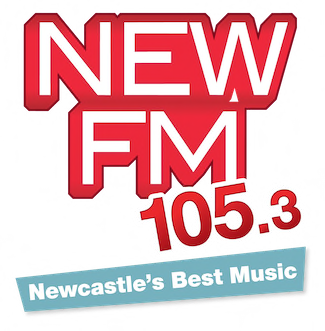Mobile Networks are great but not a replacement for Free Radio

Commercial Radio Australia has released a report by Professor Reg Coutts finding that mobile broadband networks, particularly in regional areas, are not a replacement for free to air radio.
CRA chief executive officer, Joan Warner said: “There are a lot of misperceptions around the future of broadcast radio, mobile networks and the delivery of radio online and this report shows it may not yet, or even in the longer term, be technically or financially viable”.
With the submission of the Digital Radio Discussion Paper to the Federal Government earlier this year, the commercial radio industry commissioned respected telecommunications expert, Professor Reg Coutts of Coutts Communications, to analyse the use of mobile telecommunications to deliver free to air broadcast radio in Australia. It compares the reality of technical capability of both broadcast radio and mobile networks for mass live and local free to air radio delivery.
 The Coutts Report highlights that mobile networks in regional Australia are less cost effective compared to a potential DAB+ digital radio rollout in regional areas. Even with upgraded 4G networks using the most advanced LTE broadcast mode, there are technical and economic reasons for radio to be delivered using free to air broadcast technology in both regional and metropolitan areas.
The Coutts Report highlights that mobile networks in regional Australia are less cost effective compared to a potential DAB+ digital radio rollout in regional areas. Even with upgraded 4G networks using the most advanced LTE broadcast mode, there are technical and economic reasons for radio to be delivered using free to air broadcast technology in both regional and metropolitan areas.
“Internet radio on smart phones by itself cannot substitute for broadcast radio. Broadcast digital radio is globally where innovation is happening. The Government is currently depriving regional listeners of digital radio unlike their city cousins who have both digital radio and internet radio. Innovative local radio broadcasters need broadcast digital radio which so necessary for regional communities to thrive in the future.” Professor Coutts said.
CRA chief executive officer, Joan Warner said: “Listening to radio online is complementary and not a replacement of broadcast radio, whether it’s analogue or digital. Listeners use streaming as a convenient alternative. The commercial radio industry is continually assessing technological innovation and economic viability. We recognise our listeners want to listen to radio wherever they are – in the car, at home, on their phone while in transit and as an industry we are constantly exploring the best way to achieve this".
The industry has rolled out digital radio in the five state metropolitan capitals and like the television industry, who have completely switched to digital, is looking to secure its digital broadcast future by continuing a phased rollout of broadcast digital radio to regional Australia.
The findings of this Australian study are consistent with recent European reports which show mobile networks complement broadcast radio, but are unlikely to replace it in the foreseeable future.
Key findings are listed below and the full Coutts Report can be viewed here.
Coutts Report Key Findings
- Even with upgraded 4G networks using the most advanced LTE broadcast mode there are technical and economic reasons for radio to use free to air broadcast in both regional and metropolitan areas:
- the limited range of LTE Broadcast;
- the significant impact on mobile cell capacity for other user’s applications even if LTE Broadcast might be used to deliver radio;
- this study shows cell capacity reductions from 10% to over 40% in regional areas;
- there is no handover mechanism from LTE Broadcast to one to one streaming on 3G or 4G resulting in service drop out at the edge of LTE broadcast areas. The listener would need to manually reselect the streamed radio service;
- business models for radio carriage over LTE Broadcast are still being evaluated but likely impacts are:
- mobile network operators (MNOs) will need to pay to upgrade each of their networks;
- broadcasters will need to pay the MNO’s for using the capacity required; and,
- listeners would need to pay to receive radio streamed via mobiles which uses their mobile data plan rather than listening free to air.
- data usage and battery drain has been consistently found to be of significant concern to listeners of mobile streamed radio.
- Radio has always been and must remain, open, accessible and free to air.
- Mobile internet radio is not ‘free’ to the user in that it depends on their data consumption.
- The Australian Communications and Media Authority (ACMA), needs to plan and allocate the spectrum already set aside for digital radio to allow roll out in regional areas as part of a national plan for digital radio.
- Digital Radio can support the progressive transition from analogue AM and FM radio techniques with greater efficiency, lower costs, better quality sound, offering greater listener choice and functionality and greater diversity of broadcasters.
- Without broadcast digital radio capability, innovative regional broadcasters will increasingly be constrained compared to metropolitan broadcasters.
- Further, audio streaming to a mobile phone, unlike free to air broadcast to a radio or DAB+ enabled handset, is not free as the streamed data contributes to use of the listener’s data cap of their mobile service contract.
- Heavy mobile data traffic conditions can see a complete loss of the session. Even in non-congested times, receipt of an email on a smart phone can cause an interruption when listening to radio on the internet.
- Demand Hotspots particularly if combined with a moving mobile user can be particularly challenging for listening to a streamed internet radio service.
- Digital radio exhibits lower latency at 3-4 seconds, compared within internet radio where necessary buffering across all services can cause more significant delays of over 10-20 seconds. Latency is a particular problem where the content is an intrinsic part of a live sports experience making digital radio more suitable for sports crazy Australians.
- Large capital and operational cost advantages using DAB+ compared to FM for regional areas the focus for this report.


